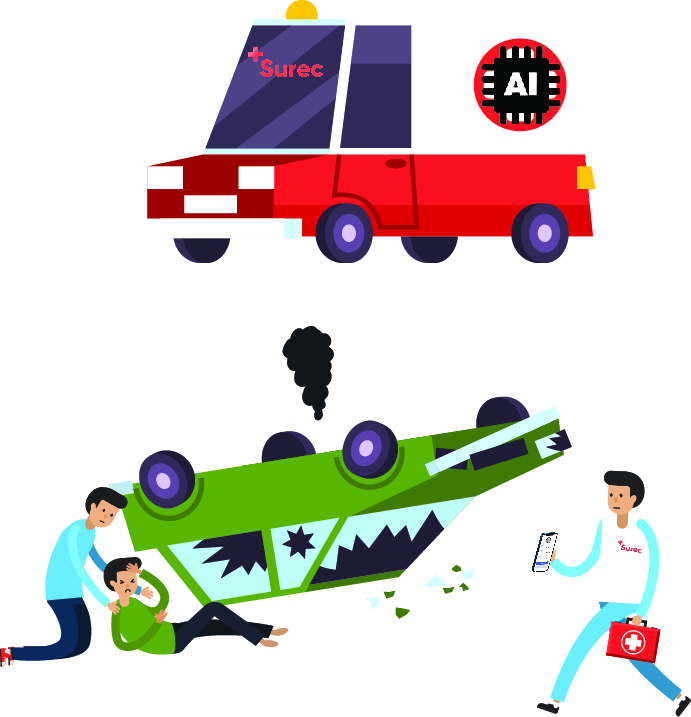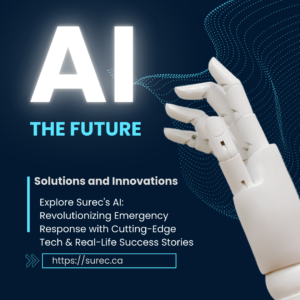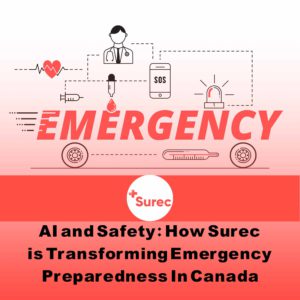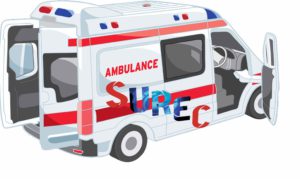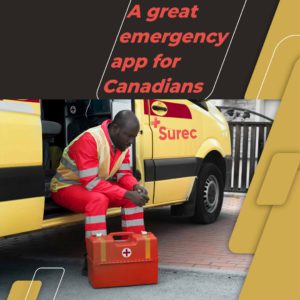AI app for ambulance in Canada
On-the-go communication between emergency medical services and hospitals just got easier due to the use of Artificial Intelligence.
The use of Artificial Intelligence (AI) in emergency medical services has been around for a while. Technology is now being used to create a more efficient way of communication between hospitals and emergency medical services.
With AI, it’s easier for hospitals to provide accurate information about the location of their patients and the availability of beds. This just makes it easier for doctors and nurses to provide better care for their patients.
There are certain cases where AI can provide real-time information about patient conditions, which can help doctors make better decisions on how they should treat their patients. AI is used heavily in the medical field. One example of an AI-reliant project is Surec app, which we use in our startup company. Surec uses a combination of techniques to solve some medical problems and make it easier for doctors to take care of their patients.
In order to keep up with this innovation, the EMS industry should implement AI technology into its culture in order to remain competitive. AI is not just limited to the tech industry, but it has a significant impact on medical providers as well. Hospitals are embracing technology and that AI is a vital part of the future of healthcare. With this adoption, hospitals will be able to provide more efficient care for patients with better outcomes.
This significant transformation has led to significant improvements in services provided to the public, but also added many new responsibilities and challenges. for those who are involved in the system.
The 2 realities of emergency medical services for EMS professionals include the following:
Reality 1: Constant Work: EMS is a 24/7 job that requires 24/7 commitment from practitioners in order to provide emergency care. For example, doctors have to stay up-to-date on their continuing education hours or remain on call for emergency shifts. They also have to maintain the level of care that is needed in emergency situations.
Reality 2: Stressful Environments: Providing emergency care in a stressful environment has been shown to be one of the more significant challenges for EMS professionals. For example, speaking with a patient’s family during an emergency can add even more stress and make it difficult for EMS professionals to focus on what is most important-providing care for and stabilizing their patients. Past research has shown that “blunt force trauma, like a large impact, places patients in a state of confusion and may delay their response to pre-hospital care.”
The study is the first step in developing a new way to help EMS professionals provide more effective care.
There are many ways that AI can be used in the healthcare industry. The most popular one is the use of AI to connect ambulances and hospitals with an AI app.
The Emergency Medical Services Application (EMS) is an artificial intelligence (AI) application that aims to make communication between ambulances and hospitals faster, more efficient, and more effective. The app can be used as a result of an accident or medical emergency and allows for real-time communication to coordinate the most efficient care possible.
This application has been developed by a company called Surec, which is a company that specializes in developing innovative software solutions for emergency medical services. This particular product has been designed to help emergency medical services providers manage their day-to-day operations as well as improve patient care by providing real-time information about patients and incidents. The software is primarily used by emergency medical services providers, but also has other uses such as air ambulances in Canada that we will discuss in another article shortly.
The software (SUREC) is designed to assist emergency medical services providers by providing real-time information about patients and incidents. It helps users manage their operations and improve patient care by providing real-time information about patients in accidents.
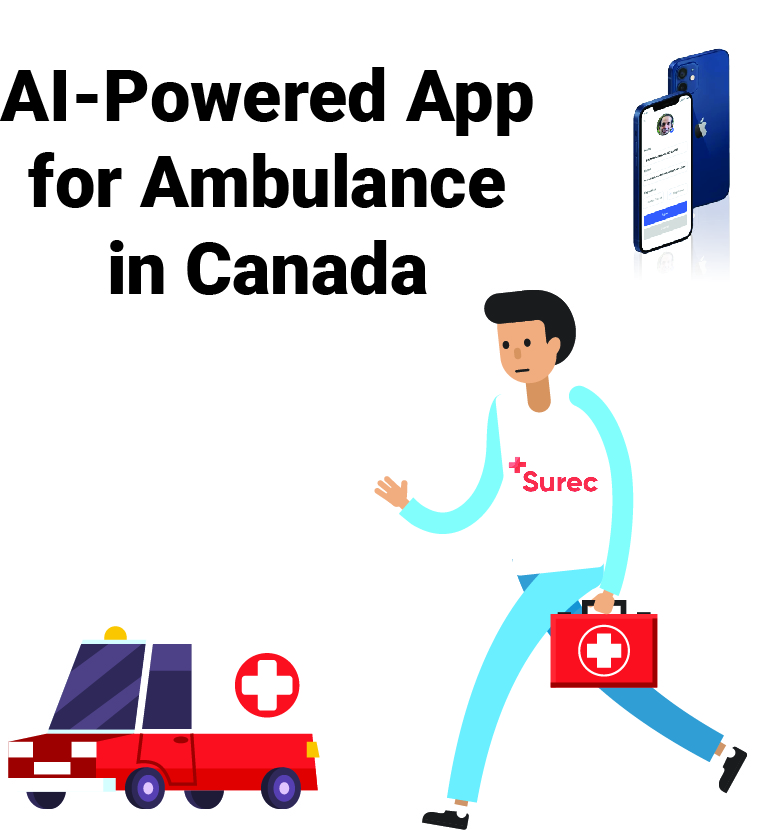
5 trends will help the healthcare system of the future
This article describes 5 factors that will help shape the healthcare service of the future.
Actually, scientists have been trying to foresee the future of healthcare facilities for decades. Given the current shift toward digital healthcare technologies and the uptake of remote treatment techniques, which was partly sparked by the COVID-19 pandemic, it is only logical to consider how these developments would affect those healthcare organizations. What can we expect from them moving forward? Or, in a year, will there even be health centres?
1. The change of the POC towards homes
The point-of-care (POC) describes the location where care is provided. Commonly, this described the patient’s bedside in a medical care centre. However as recent years have highlighted, the POC prolongs beyond hospital wall surfaces to consist of where the individuals themselves are, many thanks to remote care and telehealth services.
Such strategies have already been piloted in nations like the U.K., U.S., Singapore and Australia. As they end up being a lot more typical in the future, healthcare facilities have to be properly geared up and designed to support such a technique of treatment shipment.
This indicates that clients can now be monitored and receive medical care referrals from the convenience of their homes This has spurred the brand-new concept of ‘digital wards’.
doctor scarcity relocates treatment from hospitals to the patient’s houses.
Virtual wards offer support to people with remote tracking as well as therapy in their very own residences through remote tracking health tools. These give real-time surveillance which, incorporated with two-way communication, enables people to be in contact with healthcare experts. The latter can subsequently offer punctual treatment if they determine signs of wear and tear. Treatments such as intravenous treatments that need skilled experts are done by a going to registered nurse.
2. Designing details spaces for remote care consultations
Digital wards aren’t the only approach that will utilize remote treatment however a considerable proportion of outpatient appointments will additionally be dealt with in this fashion. McKinsey forecasts that, in the future, 25% of outpatient solutions can be conducted through telemedicine.
Medical facility healthcare gap democratizes future
Medical spaces will certainly require reconsidering to accommodate rooms dedicated to virtual assessments and remote treatment. These will certainly include easy-to-use audio as well as lighting control, with dual displays to at the same time talk with the person as well as access their clinical documents,” Dr Diana Anderson informed The Medical Futurist.
Such an approach can help diminish the rate of unnecessary seeing while boosting the patient experience. Health centres have to be made to take care of such methods of treatment shipment.
3. From hand-written notes to voice-to-text
Within health centres, new technologies that assist in the jobs of physicians will require to be embraced. While the majority of health centres currently count on electronic wellness record (EHR) systems, these could be hampering physicians from functioning much more successfully They invest a significant quantity of time getting in data into EHRs, leaving them with less time to invest with their patients. Others also consider EHRs as their number one obstacle. By slashing the requirement to manually kind into EHRs, medical professionals will certainly be able to spend more time with their patients as well as offer clinical interest. voice to message technologies aids future medical facilities in operating a lot more efficiently. Some companies have already established such remedies that prepare to be released in health centres.An encouraging option to hand input information right into EHRs is voice-to-text innovation. It operates by means of a voice acknowledgement system that pays attention to as well as records the patient-doctor sees without requiring physical input.
4. A.I. in decision-making
One more technology with a significant capacity to improve the functioning of hospitals is an expert system (A.I.). Its contribution ranges from decreasing alarm tiredness via triaging to professional decision-making.
A.I. can without a doubt offer assistance in a multitude of diagnostic processes. Such software can, for example, provide pointers from clinical information to help clinicians recognize problems such as ADHD and sleep conditions as well as evaluate coronary artery calcification.
A.I. has a large amount of capacity in health care and also as it ends up being important to care shipment, medical facilities need to be able to accommodate them. Cloud computer infrastructure could be such a way to make healthcare facilities A.I.-ready, but the clinical staff ought to likewise obtain familiarized with the technology and its reasonable possibility.
points you can and can not get out of A.I. in future hospitals
Basically, A.I.-powered tools can come to be the physician’s new assistant that can crunch through volumes of information from their EHRs and radiological scans. They can then spot patterns as well
5. Cybersecurity and also how medical facilities can maintain patients’ information safe
With the increased digitisation of healthcare, healthcare establishments will certainly require to acknowledge the accompanying cybersecurity threats. Cyberattacks, which experienced a rise at the beginning of the COVID-19 breakout, can compromise sensitive patient data along with pressure the cancellation of essential services such as surgical treatments and also radiology examinations.
Medical facilities will thus need to ensure that patient information is dealt with responsibly and transparently; in specific to cultivate reliance on partnerships between clients, healthcare facilities as well as programmers for efficient electronic wellness adoption.
Regarding the technical aspect, anti-ransomware and also anti-virus protection ought to be employed; as well as running systems and also software program applications need to be upgraded.
How AI will change the healthcare industry future
While these 5 trends provide an indication as to exactly how the healthcare facility in the future will operate, there are several more aspects that come right into play. These vary from certain style components with the impact of tech titans to the brand-new duty of healthcare professionals. We give in-depth evaluations pertaining to how these aspects factor in the functioning of the health centre of the future and also we welcome you to discover them in detail in our new electronic book The Future Of Hospitals, The Hospitals Of The Future.
While there is essentially no efficient A.I. without client data to educate them on, privacy-focused training approaches can be embraced. One such approach is decentralised federated learning, which has actually been shown to do comparably to various other centralised designs to supply quality and reputable efficiency.
On top of these cybersecurity issues, hospitals will require to guarantee that individuals’ data are transparently handled. As they will significantly utilize A.I. devices, healthcare facilities will certainly need to utilize patient information to train the algorithms, commonly while teaming up with Big Tech businesses. Patients might not be explicitly notified of such usage of their information The partnership between Google’s DeepMind A.I. system as well as the Royal Free London NHS Trust exemplifies this. In the latter instance, particular healthcare-related details of some 1.6 million clients were shared without properly informing patients of such usage.
Medical facilities need to thus establish proper securing procedures and approaches versus cybercrimes. They can enlighten as well as educate teams to recognize as well as counter activities of destructive 3rd celebrations which typically manipulate human psychology.
With the help of AI, hospitals and ambulances can communicate with each other in real time.
This application will be helpful for emergency services providers who need to coordinate with one another during an emergency situation. This would help them to provide faster response times and improve coordination between the two. organizations. The app also has a chat function which allows paramedics and hospitals to communicate with each other in real time. All of these features would be provided by Surec app.

